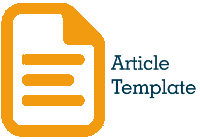EVALUATION AND IMPROVEMENT OF INTERFACE DESIGN OF SI KROMO PAGE USING USER CENTREED DESIGN APPROACH
DOI:
https://doi.org/10.35457/antivirus.v19i1.3289Keywords:
redesign, system usability scale, user centered design, usability testing, websiteAbstract
Website Si Kromo adalah salah satu website pembelajaran bahasa Jawa Krama dengan alamat website yaitu www.sikromo.com. Sejak diresmikan pada tahun 2021, pengguna Si Kromo pada tahun pertama terbukti meningkat, namun pada tahun kedua yakni 2022 pengunjung mulai menurun. Maka dari hal tersebut, peneliti melakukan evaluasi desain dan merancang ulang antarmuka beberapa halaman pada website Si Kromo. Penelitian ini bertujuan untuk mengetahui tingkat usability website Si Kromo. Proses evaluasi dan perbaikan desain website Si Kromo menggunakan metode pendekatan User Centered Design (UCD) dengan pengambilan data responden menggunakan System Usability Scale (SUS) dan Usability Testing. Kuesioner evaluasi dibagikan sebanyak dua kali, yaitu evaluasi pertama pada desain lama website Si Kromo dan evaluasi kedua pada desain baru Si Kromo. Responden yang digunakan dalam penelitian ini sebanyak 50 responden yang sama baik evaluasi pertama maupun evaluasi kedua. Penelitian ini menghasilkan skor SUS evaluasi pertama sebesar 54,75 dan skor SUS evaluasi kedua sebesar 80,15 dengan peningkatan skor SUS yakni 25,4. Pengujian lain dengan Performance Measurement menghasilkan nilai Effectiveness Completion Rate sebesar 94.8%. Sedangkan rerata waktu responden dalam menyelesaikan task antara 1-10 detik dan mendapatkan temuan permasalahan pada task 2, task 9, dan task 10. Pada analisis hipotesis, hasil yang diperoleh dari uji tersebut yaitu hipotesis H0 ditolak dan H1 diterima yang menandakan bahwa hasil skor rata-rata usability website Si Kromo tidak sama dengan 68 yaitu lebih besar dengan nilai skor sebesar 80,15.
Downloads
References
[2] N. A. Prasetyo and M. A. Gustalika, “Sosialisasi Literasi Digital dan Pelatihan Google Form Bagi Guru SDN Kertaharja 02 untuk Meningkatkan Wawasan Teknologi Digital,” IJCOSIN: Indonesian Journal of Community Service and Innovation, vol. 3, no. 1, pp. 16–22, Jan. 2023, doi: 10.20895/ijcosin.v3i1.609.
[3] M. A. Yahya, T. Wahyuningrum, and N. A. Prasetyo, “Usability Testing pada Prototype Aplikasi Mobile PlayKids Menggunakan USE Questionnaire,” Journal of Applied Computer Science and Technology, vol. 3, no. 1, Jun. 2022, doi: 10.52158/jacost.v3i1.160.
[4] A. G. Pamangki and N. A. Prasetyo, “Rancang Bangun UI/UX pada Website Label Rekaman Indie Nahitudia Records Menggunakan Metode User Centered Design.”
[5] M. A. Azis, H. Muslimah Az-Zahra, and L. Fanani, “Evaluasi dan Perancangan User Interface Aplikasi Mobile Layanan Pengaduan Masyarakat Online Menggunakan Human-Centered Design,” Jurnal Pengembangan Teknologi Informasi dan Ilmu Komputer Universitas Brawijaya, vol. 3, no. 1, pp. 529–537, 2019.
[6] L. Fanani, M. T. Ananta, and K. C. Brata, “Penerapan User-Centered Design dalam Pengembangan Aplikasi Pencarian Gedung Berbasis Android,” Cybernetics, vol. 2, no. 02, pp. 225–233, 2018, doi: 10.29406/cbn.v2i02.1156.
[7] R. H. Pawestri, H. Az-Zahra, and A. N. Rusydi, “Evaluasi Usability Aplikasi Mobile menggunakan Usability Testing dan System Usability Scale (SUS) (Studi Kasus: SOCO, Althea dan Sephora) Zero Order Basin View project HEMOCS-Head Movement Control System View project,” Jurnal Pengembangan Teknologi Informasi dan Ilmu Komputer Universitas Brawijaya, vol. 3, no. 10, pp. 9883–9891, 2019.
[8] A. A. Suhendra, G. A. A. Putri, and G. M. A. Sasmita, “Evaluasi Usability User Interface Website Menggunakan Metode Usability Testing Berbasis ISO 9241-11 (Studi Kasus PT.X),” Jurnal Ilmiah Teknologi dan Komputer, vol. 2, no. 3, pp. 31–40, 2021.
[9] Rasmila, “Evaluasi Website Dengan Menggunakan System Usability Scale (SUS) Pada Perguruan Tinggi Swasta di Palembang,” Jurnal Sistem Informasi, vol. 4, no. 1, pp. 89–98, 2018.
[10] A. Cahya Wardhana et al., “Evaluating Village-owned Enterprises and SMEs Businesses Engagement Through Web Application Using System-Usability Scale,” Jurnal Riset Komputer), vol. 9, no. 6, pp. 2407–389, 2022, doi: 10.30865/jurikom.v9i6.5035.
[11] I. A. H. N, P. I. Santoso, and R. Ferdiana, “Pengujian Usability Website Menggunakan System Usability Scale Website Usability Testing using System Usability Scale,” Jurnal Iptek-Kom, vol. 17, no. 1, pp. 31–38, 2018, doi: https://doi.org/10.33164/iptekkom.17.1.2018.31-38.
[12] J. Desain and K. Visual, “TEORI WARNA : Penerapan Lingkaran Warna dalam Berbusana,” HUMANIORA, vol. 4, no. 9, pp. 326–338, 2013.
[13] D. Handoko and R. F. Purnomo, “Analisis Pengolahan Pola Citra Background Pada Website Pemerintah Kabupaten Pringsewu,” Journal of Software Engineering and Technology, vol. 2, no. 2, pp. 18–27, 2022.
[14] E. C. Haryanto and M. A. Gustalika, “Pengujian User Experience pada Aplikasi ITTP IGracias Menggunakan System Usability Scale (SUS) dan Usability Testing,” JASMED (Journal of Software Engineering and Multimedia), vol. 1, no. 1, 2023, doi: 10.20895/jasmed.v1i1.1016.
Downloads
Published
Issue
Section
License
Copyright (c) 2025 Antivirus : Jurnal Ilmiah Teknik Informatika

This work is licensed under a Creative Commons Attribution-ShareAlike 4.0 International License.
Authors who publish with this journal agree to the following terms:
- Copyright on any article is retained by the author(s).
- Author grant the journal, right of first publication with the work simultaneously licensed under a Creative Commons Attribution License that allows others to share the work with an acknowledgement of the work’s authorship and initial publication in this journal.
- Authors are able to enter into separate, additional contractual arrangements for the non-exclusive distribution of the journal’s published version of the work (e.g., post it to an institutional repository or publish it in a book), with an acknowledgement of its initial publication in this journal.
- Authors are permitted and encouraged to post their work online (e.g., in institutional repositories or on their website) prior to and during the submission process, as it can lead to productive exchanges, as well as earlier and greater citation of published work.
- The article and any associated published material is distributed under the Creative Commons Attribution-ShareAlike 4.0 International License











